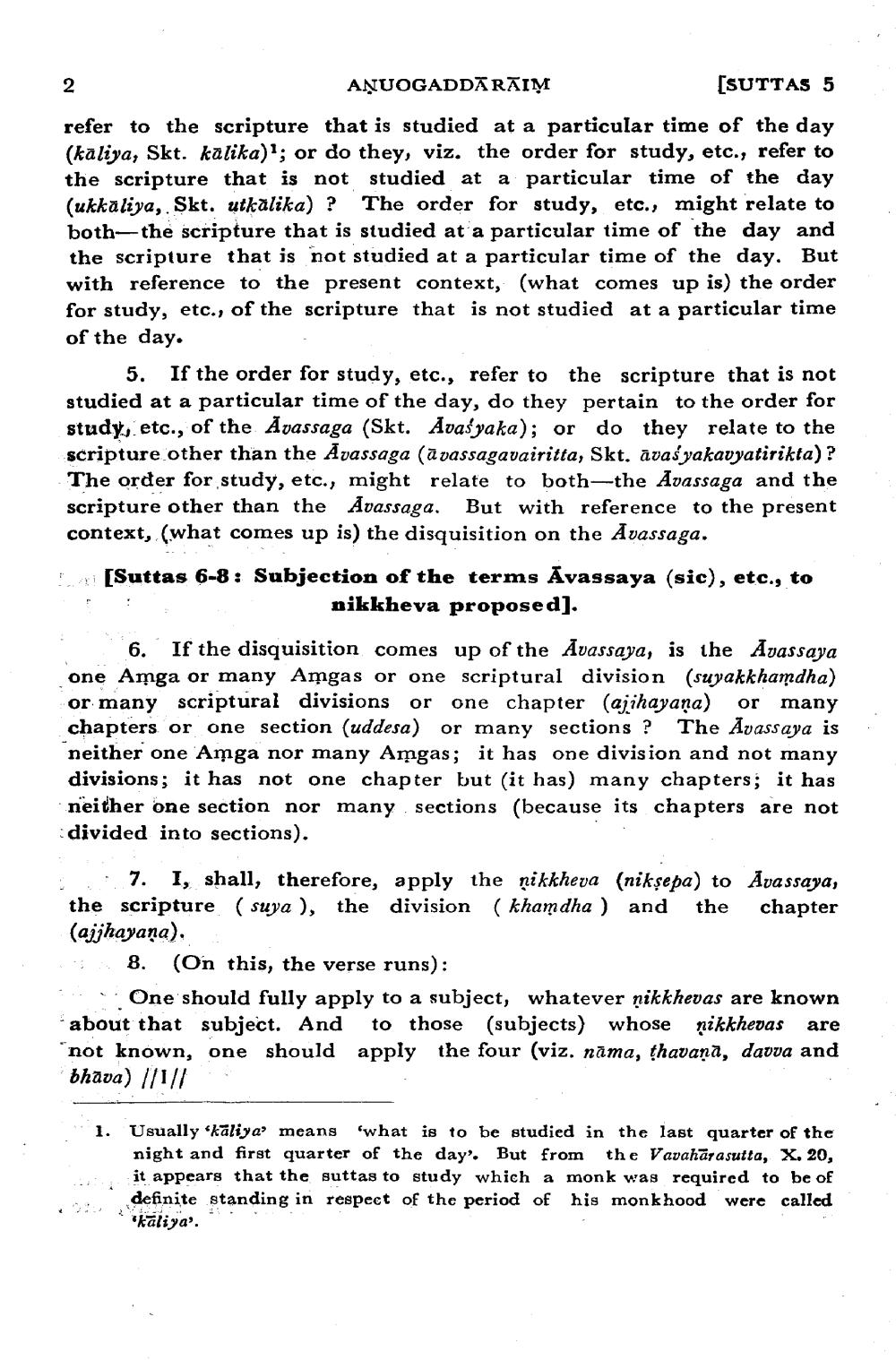________________
2
AŅUOGADDARAIM
[SUTTAS 5
refer to the scripture that is studied at a particular time of the day (kaliya, Skt. kalika)1; or do they, viz. the order for study, etc., refer to the scripture that is not studied at a particular time of the day (ukkaliya, Skt. utkalika) ? The order for study, etc., might relate to both the scripture that is studied at a particular time of the day and the scripture that is not studied at a particular time of the day. But with reference to the present context, (what comes up is) the order for study, etc., of the scripture that is not studied at a particular time of the day.
5. If the order for study, etc., refer to the scripture that is not studied at a particular time of the day, do they pertain to the order for study, etc., of the Avassaga (Skt. Avasyaka); or do they relate to the scripture other than the Avassaga (avassagavairitta, Skt. āvasyakavyatirikta)? The order for study, etc., might relate to both-the Avassaga and the scripture other than the Avassaga. But with reference to the present context, (what comes up is) the disquisition on the Avassaga.
[Suttas 6-8: Subjection of the terms Āvassaya (sic), etc., to nikkheva proposed].
6. If the disquisition comes up of the Avassaya, is the Avassaya one Amga or many Amgas or one scriptural division (suyakkhamdha) or many scriptural divisions or one chapter (ajihayana) or many chapters or one section (uddesa) or many sections ? The Avassaya is neither one Amga nor many Amgas; it has one division and not many divisions; it has not one chapter but (it has) many chapters; it has neither one section nor many sections (because its chapters are not divided into sections).
7. I, shall, therefore, apply the nikkheva (nikṣepa) to Avassaya, the scripture (suya), the division (khamdha) and the chapter (ajjhayana).
8. (On this, the verse runs):
One should fully apply to a subject, whatever nikkhevas are known about that subject. And to those (subjects) whose nikkhevas are not known, one should apply the four (viz. nāma, thavaṇā, davva and bhava) //1//
1. Usually 'kaliya' means 'what is to be studied in the last quarter of the night and first quarter of the day'. But from the Vavaharasutta, X. 20, it appears that the suttas to study which a monk was required to be of definite standing in respect of the period of his monk hood were called 'kaliya'.




